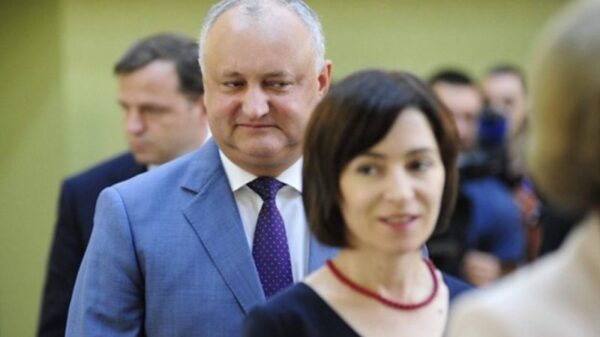writes Dick Roche former Irish Minister for European Affairs and for the Environment
In 1952 the European Coal and Steel Community came into operation. Two years earlier the leaders of six European countries determined to learn from the mistakes of the past decided to pool coal and steel production. Their primary aim was to build peace, to make war between historic rivals France and Germany “not merely unthinkable, but materially impossible”.
The political leaders believed and history proved them right – that merging economic interests could bring previous enemies closer and deliver many other benefits.
The partnership that grew from the Schumann Declaration is a lesson for today’s world – cooperation is a powerful foundation stone for peace understanding and progress.
International cooperation doesn’t just happen it requires political leaders with the strength, foresight, character, and the strength to put divisive rhetoric and demonization aside.
Paranoia about partnering with China
The idea of partnering with China inevitably triggers paranoia in some quarters. It is particularly evident in the US.
That paranoia becomes more evident when elections approach and the political temperature rises. In recent years China has become America’s new ‘bear in the woods.’
There is no logical reason why the paranoia that exists in Washington should automatically be imported into Europe or into European political thinking and policy.
Saying this is not anti-American it is just pro-European.
What American political leaders might perceive as good for America is not necessarily good for Europe. We need to think for ourselves.
With the excitement of the EU elections receding a new EU Parliament in place and a new EU Commission about to be formed, it is time for a rethink in Brussels and in Europe’s National capitals about how Europe relates to China.
If the EU is to fulfill its policy ambitions in a host of areas China should be seen as a potentially valuable potential partner – not an enemy.
Paranoia Comes with Costs
Treating China as an ever-present threat can be very costly.
This was illustrated in the telecommunications area where the US led a relentless campaign to ban the world’s leading producer of 5G equipment – which happened to be Chinese – from European networks.
Myths about ownership, intellectual property, state funding, and potential security risks, mostly coined in the US, were widely peddled and believed. Interestingly some of those myths were fostered by a think tank that is in the spotlight in the current presidential campaign.
Without any real scrutiny, these myths, against the advice of many of Europe’s network operators, became embedded in EU policymakers’ minds. Paranoia trumped experience resulting in policies that inflated costs for EU telecom network operators and customers, negatively impacted 5G rollout, and left operators with limited supplier choices going forward.
In this case not only did European policy leaders swallow the myths but in doing so they avoided implementing measures that could have addressed any well-based concerns.
The problem is that we are now transferring the distorted logic that applied in telecoms to other areas. By doing that there is a very real prospect that the mutual benefits that can flow from cooperation will be lost.
Cooperation and the Climate Challenge.
The European Union is dedicated to meeting the challenges of climate change. Rolling out clean technologies will play a critical part in that.
It is widely recognized that astute policies, major investment in R&D, a capacity to roll out innovation, and the opportunity to develop projects on scale has made China a dominant player in areas such as solar power, wind energy and electric vehicles.
Rather than erect trade barriers in these areas as the EU now seems intent on doing it makes common sense for Europe to sit down with China to address any concerns that exist and having done so put in place policies that would allow Europe to build on what China has achieved – and through mutual cooperation to see what further can be achieved.
In the area of wind energy, a recent report by Wood Mackenzie records that Chinese-manufactured equipment accounted for 65% of global new wind capacity in 2023. Four wind turbine manufacturers from China are in the global top 5 for wind-generated capacity installation.
Europe has abundant wind energy capacity, particularly in its west and northwest. There are huge benefits in developing that capacity. Does it make sense to impose tax burdens or close the use of Chinese-manufactured equipment from the challenge of developing that capacity?
The same question arises in solar energy. The International Energy Authority makes the point that China is the home of the world’s leading suppliers of solar photovoltaic cell manufacturing equipment. The investment that China has made in this area has dramatically brought the costs of solar energy down. That makes clean energy an affordable reality for the world. Again, the question arises does it really make sense to make it more expensive for entrepreneurs who want to invest in solar energy production in Europe more expensive through tariffs?
There is another reality, Europe’s greatest wind energy potential is on one side of the continent and the greatest solar energy potential is on another. Europe’s major consumers are, rather inconveniently, located elsewhere across the continent.
Squaring the circle and bringing clean energy to consumers requires the development of “smart networks” again, partly because of its geography, China has become a major player in the development of smart grids, smart meters, and smart energy storage. Ignoring that reality and making the deployment of Chinese-manufactured technology more difficult, again, makes no sense.
Decarbonizing transport Is critical to the achievement of Europe’s climate ambitions. Innovation, particularly in battery technology, cross-industry cooperation favourable government policies all set the stage for China to become the leading producer and leading consumer of electric vehicles.
Against that reality, the announcement on 12th June, of proposals for provisional duties of up to 38.1% on imports of EVs made in China is hard to fathom. That announcement followed hard on the heels of President Biden’s election-related announcement of swinging US tariffs on Chinese-manufactured electric cars. Leading EU automakers advised against copying the US. Their warnings were ignored.
At a time when a series of factors are putting a break on consumer enthusiasm for EVs, one must ask if increasing the costs of electric cars, including cars manufactured in China by EU carmakers sensible.
Sit Down and Talk
Technological change will be a key driver of the green and digital transition in Europe. Like it or not China happens to be a leader in technologies that are vital if Europe is to progress towards carbon neutrality.
As mentioned already, the logical thing for the EU to do at this point is to recognize that reality and to sit down with China and any other potential partners to hammer out solutions for the ideological, political, and administrative differences that stand in the way of progress.
The reality is that EU-China relations have grown in importance and that will continue to be the reality even if it causes some angst for other EU partners.
As trade and political contacts grow more complex and new challenges arise.
Resolving those challenges requires effort from both sides. That won’t always be easy but failing to do so would be very costly.
As in so many areas of life, it is never possible to resolve all problems at once.
In my view healthy bilateral relations are best fostered by growing mutual understanding and respect: that requires continuous dialogue.
Dick Roche is a former Irish Minister for European Affairs and for the Environment










































